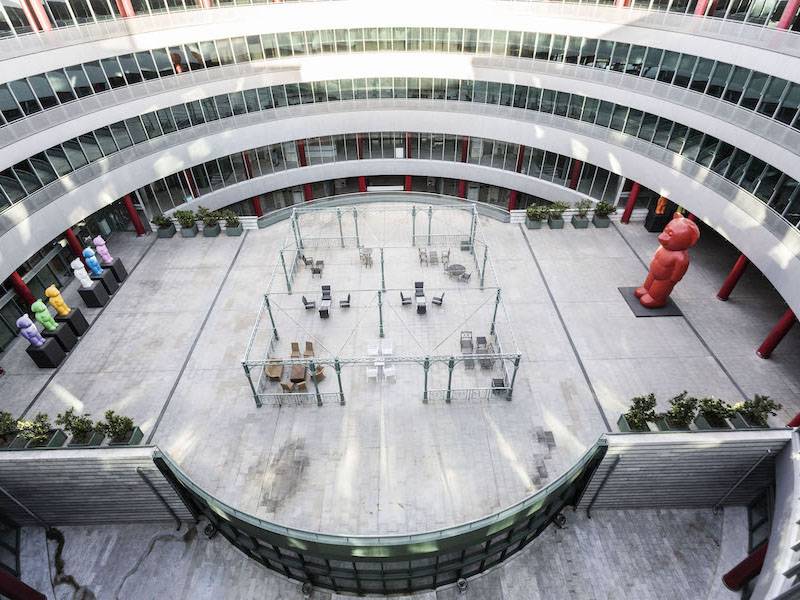IFEMA Highlights its Safety and Strategic Role in the Economy

Numerous new features in the field of prevention and protection, together with the recently created Health and Safety Control Unit (UCS) along with protocols and cutting-edge technology to guarantee a “safe space” are the IFEMA's aims to its return in September.
The imminent return to trade fair activity by IFEMA, as from September 2020, has accelerated the preparation of the venue and its management to ensure the utmost safety and health levels for its exhibitors, visitors, suppliers and employees.
For this reason, there are many measures that are being submitted to analysis and certification by IFEMA, with a view to resuming its activity and recovering the strategic role of fairs and congresses in helping companies with the reactivation of their businesses, and to contribute to the rebuilding of the economy.
Hence, IFEMA is already adopting all the protocols based on criteria defined by the health authorities and the main international public and sector organisations, in order to offer safe and healthy spaces and environments. With this aim in mind, IFEMA is working to implement mechanisms that guarantee and monitor all the issues related to the safety, control and preservation of the health of the different groups taking part in the fairs, as well as the hygiene, quality and environmental safety of the facilities. This is added to by the management and control of attendance capacities, and the constant monitoring of foot traffic to encourage social distancing and prevent high levels of clustering. All this accompanied by effective communication management and awareness campaigns to ensure compliance with all forms of best practice regarding fairs and the adaptation of companies to the new post-Covid-19 environment.
The objective at the moment, in short, is to maximise protection for the trade sectors represented in the different gatherings, and to ensure that suppliers and employees to avoid any risk. To do this, prevention measures and mechanisms are being implemented, which will be supervised by the Health and Safety Control Unit (UCS) recently created by IFEMA.
Access control, distancing and attendance capacities. IFEMA has implemented a comprehensive strategy entitled “NO HANDS. CONTACTLESS” throughout the production, execution and dismantling of its events for all users of the venue. In addition, it has designed a new procedure for the preventive management of foot traffic and vehicle traffic and it has incorporated telemetric counters for people entering and leaving, which allow real-time control of attendance levels, as well as technological solutions that provide knowledge and control of areas of confluence and clustering of people with density levels greater than those recommended. In spaces where the minimum distancing cannot be maintained, protective partitions have been installed and the use of face masks will be mandatory.
Another effective measure will be the ‘e-ticketing’ access system, in which tickets will be received electronically and displayed on the telephone screen to speed up access and minimise clustering at registration desks, in addition to daily access passes to control attendance capacities, and “0 Rows” designed for queue management based on spatial distribution criteria with separators, ground and air signage and support staff for the control and management of foot traffic.
Health measures and health service units - Regarding health measures, highlights include the technology installed at IFEMA entrances with body temperature detection systems, health condition checking systems, first aid units and services, medical services, emergency units and units specialising in immunology and epidemiology.
In addition, protocols have been established to improve and step up the frequency, intensity and quality of cleaning, sanitation, waste disposal and disinfection processes in all interior and exterior areas of the venue. This is added to by the distribution of disinfection dispensers at all transit points, and the visible display of hygiene measures in strategic places.
Measures to ensure mobility - Movements within and into and out of the premises will also be supervised, guaranteeing uninterrupted connections with public transport services, taxis, shuttle services, chauffeur-driven vehicles etc., and preventively managing the entrances, passenger alighting areas and waiting areas for the departure of foot traffic and vehicle traffic from the venue. In addition, the flows at the entrances and exits will be organised to avoid queues and clustering during the holding of fairs, congresses and events.
Other Articles
About Us
Supported by the Union of International Associations (UIA), the International Association of Professional Congress Organisers (IAPCO) and the Interel Group, the global public affairs and association management consultancy, Headquarters Magazines serve the needs of international associations organising worldwide congresses.















